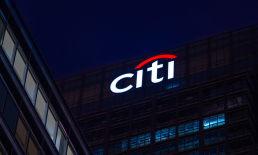“Given the strength we continue to see in the third quarter, we now believe the pandemic has been less of a temporary demand spike and more of a permanent catalyst, putting our business on a higher, sustained trajectory,” said a July 30 letter to shareholders signed by Matt Maloney, founder and CEO, and Adam DeWitt, president and CFO.
Having cleared the last hurdles to its $7.3 billion acquisition by Just Eat Takeaway.com in June, Grubhub did not host a call with analysts or issue forward-looking statements with earnings.
Minus $100 million in one-time expenses incurred on restaurant support measures, such as lowering fees and offering discounts to help businesses on the platform, and “backing out our corporate business and our Manhattan consumer business, which have been adversely impacted by COVID,” the company said that its GFS rose “almost 90 percent in the second quarter. Active diners reached 27.5 million” in Q2, which Grubhub called “a record-setting increase of 3.6 million active diners” from Q1.
Due to the extraordinary expenses, Grubhub logged a net loss of $45 million for the quarter, compared to net income of $1 million in Q2 2019. Adjusted EBITDA was $13 million ($0.23 per order) in Q2 compared to $21 million ($0.45 per order) in Q1 2020.
“Without the $100 million of restaurant and driver support, adjusted EBITDA would have easily reached record levels in the second quarter,” the company stated.
Advertisement: Scroll to Continue
Grubhub said growth of its “daily average grubs” (DAG), the company’s metric for how many meal orders pass through the platform, accelerated consistently through Q2, from 20 percent in April to 35 percent in May to 40 percent in June. Calling the COVID effect “broad-based,” the company said YoY GFS growth accelerated “to over 150 percent in many smaller and newer markets as one might expect, but also in larger and more established markets, including many where our competitors scaled operations earlier than we did. We also added more partnered restaurants to our platform in the first half of 2020 than we did during all of 2019.”
The mobile order-ahead space has generally performed well through the pandemic, keeping millions fed safely. PYMNTS’ Order-to-Eat Tracker reflects an industry that’s getting creative with ordering and payments to keep the rally going. “More consumers are shifting to digital purchasing during the COVID-19 pandemic, and even those who are shopping in stores have begun using contactless payments at checkout,” according to the July Order to Eat Tracker®. “Recent PYMNTS research has revealed an almost fivefold increase since March 6 in customers’ use of restaurant aggregators as a substitute to eating in their favorite restaurants.”
That increase explains a lot about Grubhub’s Q2 performance.
“We exited the quarter with an annualized GFS run rate greater than $9.0 billion — compared to $5.9 billion for all of 2019 — and we are confident that our focus on restaurants and diner loyalty will help us build on this success,” Grubhub said in its Q2 earnings letter.
“We had millions of new diners trying Grubhub for the first time [in Q2 2020], meaningfully improved diner retention and frequency for new and old diners alike, and a business mix that could easily support long-term economics of more than $1.50 of adjusted EBITDA per order in virtually all of our markets,” Grubhub stated.




